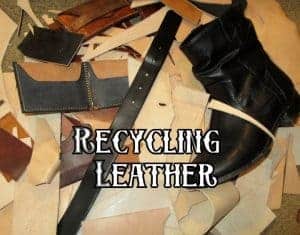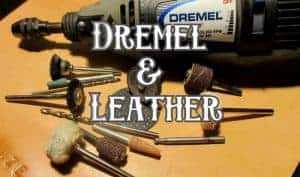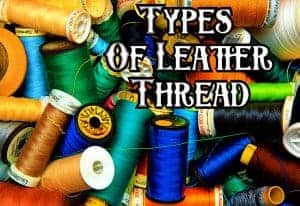
4 Ways to Harden Leather

Hardening leather is a good way to make your leather a little extra durable. Whether you want to make armor or just add some extra strength to your leather project, we have a couple tips to help you.
Throughout history we see many different ways to harden leather and this was common for armour making. Romans used leather for shield, helmets arm guards and leg guards for battle. Now regular leather is just a little too weak to be used to block attacks so they came up with methods to harden it.
When hardening you have to be careful to avoid not over hardening to the point of making the leather very easy to break.
Weaver Leather Supply | Amazon
Buy at Amazon.com
This team has a deep knowledge of leather, machinery, hardware and more and works diligently to ensure every product with the Weaver Leather Craft Supply name meets the highest quality standards.
We earn a commission if you make a purchase, at no additional cost to you.
How to harden Leather
Veg-tanned leather should be used to get the best results when hardening leather. Also since other tanned leather involves chemicals, these chemicals can burn off and cause nasty fumes. For the best results use a thick piece of veg-tanned, I am using 9-10oz leather in these examples.
Method 1: Boiling water
To start we will begin with filling a bowl of room temperature water enough to cover the whole leather piece. Allow the leather to sit in this bowl for a couple minutes.

This will give the leather enough time to soak up enough water to make it very flexible. This start to hardening leather is pretty universal as you will have to mold, bake, boil or hammer the leather.
It also is a must for hardening leather using the boiling method since the leather should be wet before placing it in the hot water. If not, the leather will have to soak up all the water first and will not start to curdle as fast.
You will set a pot of water onto a warm burner while the leather sits in the bowl of water. Once the water starts boiling or reaches 180 degrees take the pot off of the burner. Now you can transfer the leather into the pot from the bowl.
If the water is hot enough you will see the edges of the leather start to curl and darken in color.

This should start within the first 5-10 seconds. Allow the leather to sit in the water for around 15-60 seconds. You will notice the leather shrinking in size, curling more and darkening in color. After the time has been reached, take the leather out of the pot and stretch it out a little bit.
You should notice that the leather has swelled up a decent amount.
Note: I am not too sure if I left it in for too long or the water was too hot, but the leather formed a pocket. This pocket bulged out making it very hard to reshape. The leather had also decreased about 1/3 of the original size. I figured if I let it sit for another 5-10 seconds the bubble would have disappeared and swelled evenly throughout the whole piece.
After taking it out you will want to form it to your object/mold.
I have an article on four ways to wet mold and tips for wet molding to check out to better understand how to do it. But for now we’ll just quickly explain.
Take your item that is wrapped with plastic wrap and place onto a hard/wooden surface. This will keep the object from getting wet and allow you to nail your leather down.
Place the leather around the item and hammer in nails or staple the leather down as you shape it against the item. This will keep the leather from moving so it will harden around the item you are shaping it to.

Allow this to dry fully, for me it took around 6-8 hours as it was very wet when it was taken out of the pot.
Once dry you should now have a shaped piece of leather with extra durability.

This method swells the leather making it much more thicker than the original starting point. Condensing the grain in a smaller area will allow for a harder piece.
Method 2: Hammer Time
To start you will do the same thing and place your leather in a room temperature bowl of water. Allow this to sit for 10 minutes then take it out.
Move to a place where you can hammer the leather and without damaging the leather. Starts hammering the surface for a few minutes, making sure you cover the whole area multiple times.

Note: As you hammer the leather you will see the leather is taking shape of the hammer head. This can be unappealing but can be fixed after done by smoothing it out with your fingers or a roller. I left mine how it was because I though it added a pretty cool texture to it. So doing this with a piece of leather that has been stamped, carved, burned, painted or dyed will greatly alter the results.
After you have hammered the leather you should notice it being much dryer than before. This is good since you hammered out a lot of water from it.
You can now mold your leather around your item and let sit for a few hours. This method will take a lot less time to dry since you will be beating the water out of it.

As you hammer the leather you are thinning out the leather unlike the first method. This will allow the grain to be more squished together making the thick piece a little thinner and more durable.


Method 3: Baking Leather
Again, start with leather in bowl of water and let sit for a couple of minutes. Once you place the leather in the bowl, set your oven or toaster oven to 120 degrees fahrenheit. If your oven does not go that low, use the lowest temperature you can. Mine was set to 150 degrees.
Once 10 minutes has been up take the leather out of the water and start molding it with your hands. As you shape the leather be sure to continue to run your fingers along the creases/edges of your item. Doing this for a few minutes will allow the leather to already start to take and hold shape.
Once you notice the leather can stay in the desired shape by itself you will want to place it into the oven.

For the leather to harden it can take anywhere between 30-90 minutes and will depend on desired strength. The longer you let sit in the oven the harder it will get, but going too long will turn it very brittle.
I noticed around 30-40 minutes the leather had dried completely then I left in there for a total of 70 minutes. This method had shrunk the leather a very small amount making the grain a bit more tight.
Once you take it out allow it to cool for around 10 minutes. Now you it will be ready to be worked on right away.

Weaver also explains a different method to do this type of baking. They say adding in oven around 200 degrees fahrenheit for 20 minutes will firm up the leather. This will allow you it to still be a little moist to work with but once dry, hard as a rock.
Method 4: Hot Wax
This can be a very dangerous method as boiling wax can pop and burn anyone around it. You Are Warned!!
This is why I personally didn’t try it nor do I recommend. But it still is a way, or two ways to use wax that can be tried.
For dunking into hot wax you can have the leather item already stitched, inked or carved. This wax will add a hardened layer around the whole item.
You will melt beeswax (or any other wax, but beeswax is recommended) into a pot around 250 degrees Celsius. Allow this to sit in the wax bath for around 3 minutes. Since it is wax and not water the leather will not swell up as it does from the boiling water method.
After your item has been sitting you will take it out and start forming the item. Allow it to cool down a bit before hand as it will be very hot.
Once your item has been molded you will place into an oven for 10 minutes at 180 degrees Celsius.
Dark Horse Workshop shows how he does wax molding in this tutorial below.
Another way to use wax is to melt wax into a pot and paint it onto your leather. So after you have wet formed the leather into shape you will apply coats of wax onto the leather.
This wax adds for extra durability and protection to the leather as the wax will dry and become a thicker substance. You can cook the leather for 30 minutes till its dry to spread up the process then apply the wax.
Regular wet molding
Wet molding in general will tend to harden the surface area of the leather. As water soaks into the leather it will create a tighter leather. This can be done to make something a little extra durable than your average leather piece but don’t count it lasting as long as some of the other hardening methods.
Even adding water to a flat surfaced area of leather can help strengthen the leather. This is can be used for bags to add a little extra support of add some leather padding to your item. It is very easy to soak some leather and let it sit for a few hours until dry
Results
The boiled water method definitely seemed to be the hardest leather over the 3 test I did. It feels much more solid than the original leather and other methods I had tried. The downside is that the leather almost doubled in thickness, darkened in color and was hard to keep even. I would love to do this with a 6-7 oz piece of leather to swell to around an 11 oz piece.
I like the final color but was upset to have the warp in the middle. Like I said, I should have waited a little longer till the whole area swelled evenly or took it out right after the edges started to swell.
The hammer method worked pretty nicely and gave the leather some cool rough texture. It feel a little harder than normal but just barely more than your average wet molding. I feel I could’ve hammered it for maybe twice the amount and it might have helped harden the leather a bit more.
The baking method didn’t seem to work too well. It definitely was a short alternative to wet molding and waiting hours before it was dry, but didn’t really harden as much as I thought it would. The piece came out very clean though so that is a plus!
Weaver Leather also has a specialized leather firmer that can easily had toughness to your leather. You can apply this to add to these methods or do this by itself.
Weaver Leather Supply | Amazon
Buy at Amazon.com
This team has a deep knowledge of leather, machinery, hardware and more and works diligently to ensure every product with the Weaver Leather Craft Supply name meets the highest quality standards.
We earn a commission if you make a purchase, at no additional cost to you.
All in all it was fun testing out ways to harden leather and I hope this gave you some ideas of what to try for your next project!




